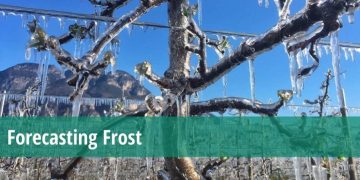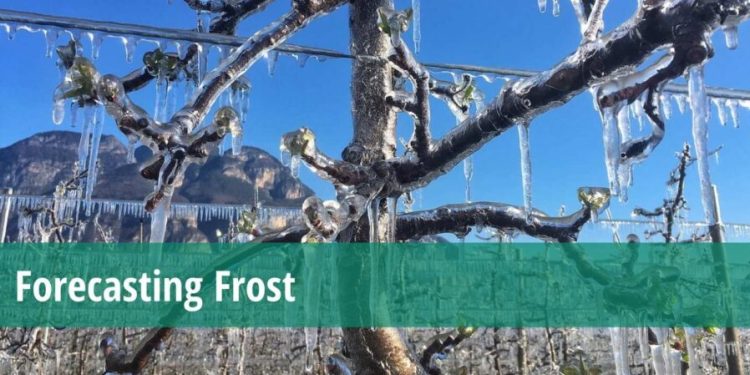#frostprotection #wetbulbtemperature #drybulbtemperature #weatherforecasting #cropmanagement #real-timedata #riskmanagement #frostalerts #temperaturesensors #agriculture
Accurate weather forecasts are crucial when dealing with frost conditions, as they enable timely reactions and potential prevention of severe damage. To effectively address these challenges, having the right tools for frost prediction becomes essential. By integrating wet and dry bulb temperature sensors with weather forecasting, farmers and growers can enhance their frost protection strategies and optimize crop management.
Optimal Frost Protection Measures: With precise weather forecasts and real-time data from wet and dry bulb temperature sensors, farmers can plan and implement appropriate frost protection measures for their crops. By knowing the current conditions in their orchards or fields and having site-specific forecasts for key frost conditions, they can take proactive steps to minimize potential damage and financial loss.
Informed Decision-Making: By leveraging the combined insights of wet and dry bulb temperature sensors and weather forecasting, farmers can make informed decisions about planting. Understanding temperature trends over the next 48 hours helps maximize yields and profits. They can adjust their planting schedules based on accurate predictions, ensuring that crops are not exposed to high frost risks.
Proactive Risk Management: By staying ahead of weather-related risks through integrated temperature sensors and forecasting, farmers can be better prepared for potential challenges. They can anticipate frost events and take necessary precautions to safeguard their crops. This proactive approach minimizes losses and enhances overall resilience in the face of changing weather patterns.
How Do Wet and Dry Bulb Temperature Sensors and Weather Forecasting Work Together?
To optimize frost protection, a new graph has been introduced that combines real-time measured data from wet and dry bulb temperature sensors with accurate temperature predictions for the next 48 hours. This powerful combination enables farmers to:
Monitor Current Conditions: By tracking wet and dry bulb temperature readings in real-time, farmers gain insights into their orchards or fields’ specific conditions during frost events. This information helps them assess the risk levels accurately.
Predict Frost Potential: Wet bulb temperature, which represents the temperature within plant tissues during frost conditions, serves as a valuable predictor of potential frost. By monitoring this parameter, farmers can determine the right moment to initiate their irrigation systems and protect their plants effectively.
Receive Real-Time Frost Alerts: When a frost event is imminent, farmers receive alerts through various channels such as text, sound, and email. These timely notifications enable them to take immediate action to safeguard their crops and mitigate potential damage. By setting up real-time frost alerts, farmers can stay one step ahead and save money by avoiding significant losses.
Evaluate Frost Mitigation Strategies: Integrating wet and dry bulb temperature sensors with weather forecasting allows farmers to assess the effectiveness of their frost mitigation tools. They can monitor whether their existing measures are delivering the desired results or if adjustments are necessary for improved efficiency.
The integration of wet and dry bulb temperature sensors with weather forecasting significantly enhances frost protection strategies. Accurate predictions and real-time monitoring empower farmers to plan ahead, protect their crops, and optimize their overall agricultural operations. By leveraging these advanced tools, farmers can mitigate risks, maximize yields, and achieve greater profitability in frost-prone environments.


































